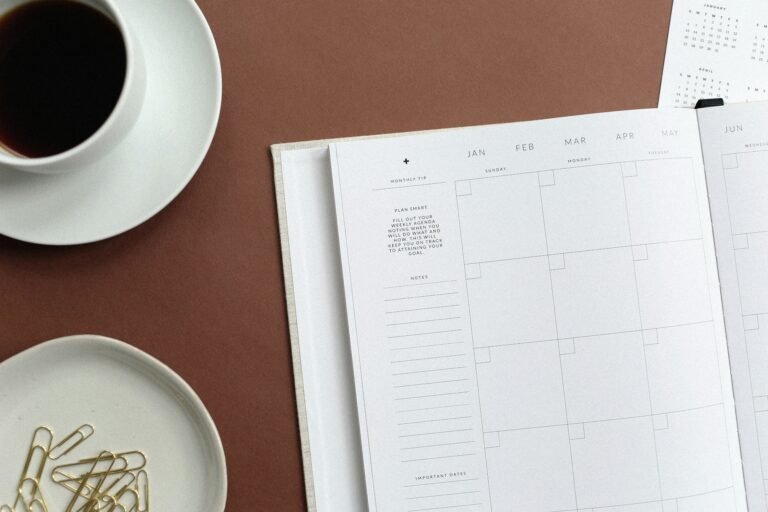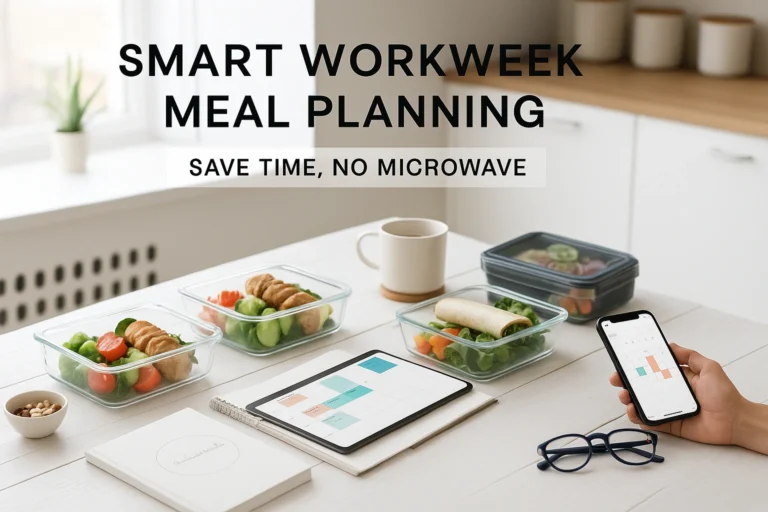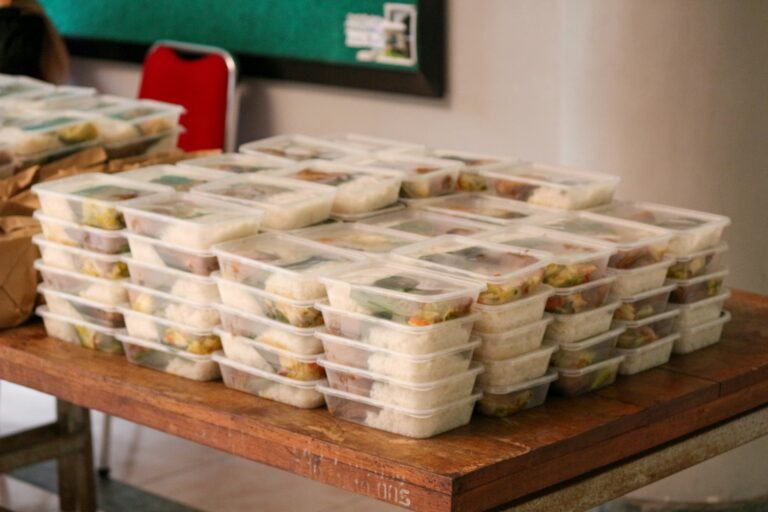How to Reduce Food Waste with Meal Planning Tips That Actually Save Money on Groceries
Introduction: We’ve All Been There
A few months ago, I bought a family-sized bag of baby spinach because I was “definitely” going to make smoothies every morning. By Friday, it was still sitting there, turning into green sludge at the back of my fridge. Straight into the trash it went.
Sound familiar? You’re not alone. According to the USDA, American households waste 30–40% of their food supply every year, costing families about $1,500 annually. A 2022 NRDC report found that the average American family throws out nearly 250 pounds of food annually. And on a global scale, the UN estimates that one-third of all food produced worldwide is wasted.
That’s not just wasted groceries—it’s wasted time, effort, and money.
The fix doesn’t require becoming a master chef or spending hours in the kitchen. With practical meal planning tips, you can reduce food waste, save money on groceries, and finally stop feeling guilty every time you clean out the fridge.
1. Why Reducing Food Waste Matters More Than You Think
Throwing food away feels awful for three reasons:
- Money drain: A half-eaten salad kit here, a moldy loaf of bread there… over time, it quietly drains your budget.
- Environmental impact: Food in landfills produces methane, a greenhouse gas more harmful than CO₂ (see EPA guidance on preventing wasted food at home).
- Stress factor: Nobody enjoys pulling out expired yogurt and thinking, “Why did I even buy this?”
How many times have you thrown away a half-used bag of lettuce or a container of leftovers you swore you’d finish? Meal planning tackles that problem head-on.
2. Start with a Kitchen Audit
Here’s where most people trip up: they shop without checking what they already have. I used to do it too—coming home with yet another jar of salsa, only to discover three unopened ones in the pantry. By the time I noticed, one was already expired.
👉 Set a five-minute timer before you write your grocery list. Open your fridge and freezer, make a quick “eat-first” list, and move those foods to eye level. That tiny step alone can reduce food waste this week.
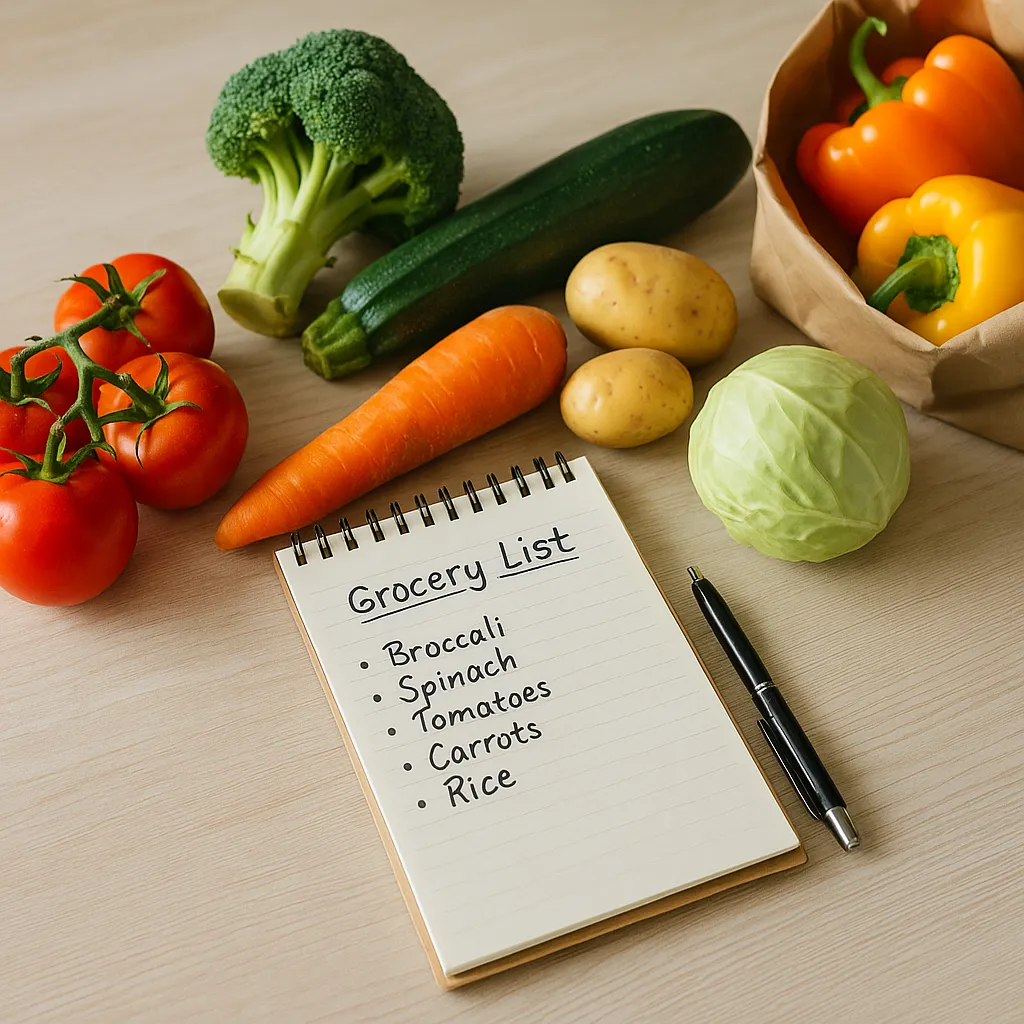
If you see tortillas about to go bad? Plan quesadillas or breakfast wraps instead of buying bread.
For more grocery-saving strategies, check out Can You Really Feed a Family on $50 a Week?.
3. Flexible Meal Planning Tips That Work in Real Life
Rigid meal plans often collapse when real life interferes. Miss Monday’s lasagna and suddenly Tuesday’s stir-fry doesn’t make sense either. That’s why flexible planning works better.
Choose core ingredients and rotate them:
- Proteins: chicken thighs, beans, eggs, tofu
- Vegetables: broccoli, carrots, spinach, zucchini
- Starches: rice, pasta, potatoes
From just these basics, you can build bowls, stir-fries, soups, or wraps.
👉 A reader named Sarah told me she started shopping twice a week instead of once. At first she thought it would take more time, but instead she found it actually helped her reduce food waste by nearly 40%—because she only bought what she could cook within a few days.
4. Cook Once, Eat Twice (Leftover Meal Ideas That Actually Work)
Here’s a mistake I made over and over: cooking a huge pot of chili with no plan to use it beyond one or two meals. By day four, nobody wanted it, and it ended up in the trash.
Now I treat leftovers as “meal building blocks.” For example:
- Roast a whole chicken → dinner tonight, chicken salad for lunch, broth for soup later.
- Cook rice in bulk → burrito bowls on Monday, fried rice on Wednesday, rice pudding on Friday.
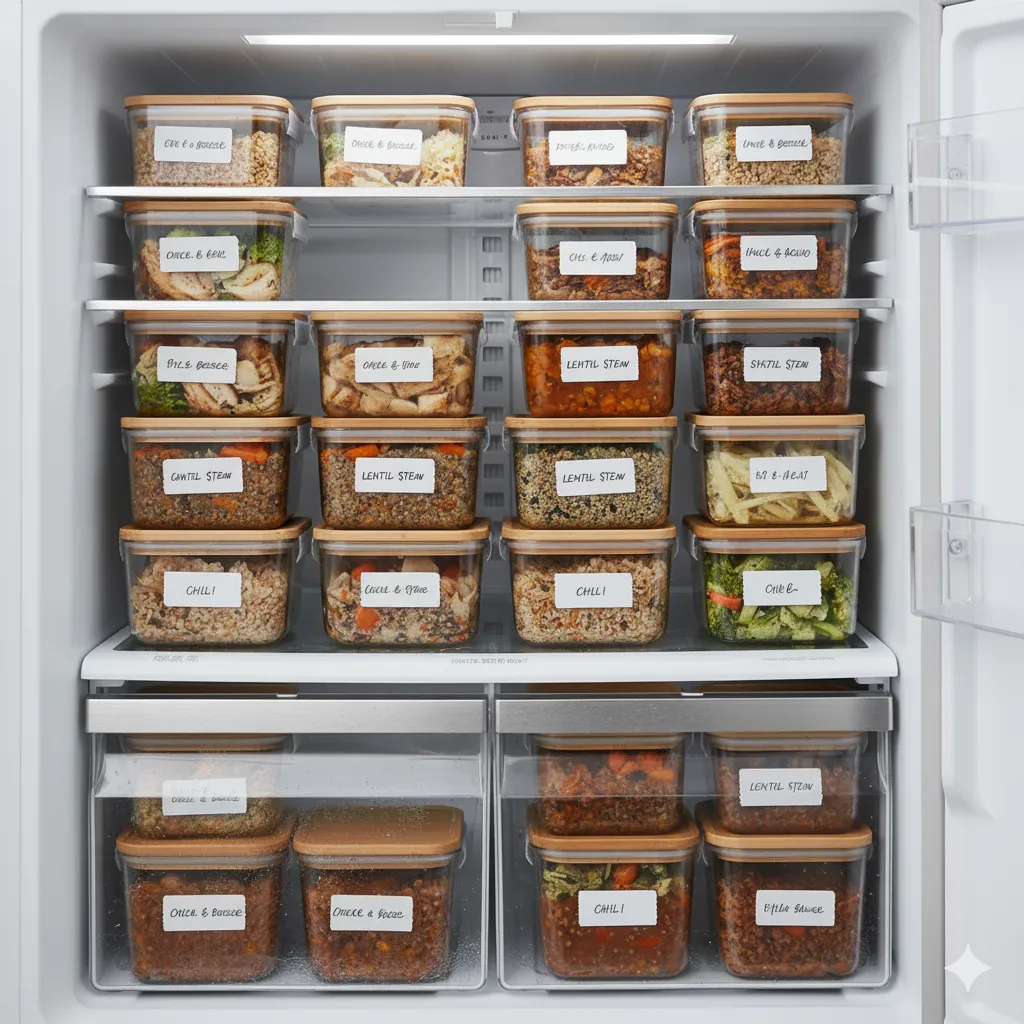
And my favorite—roasted vegetables.
- Roast a tray of veggies → serve as a side dish, mix into an omelet, or toss on top of pasta.
When you plan this way, leftover meal ideas become exciting rather than repetitive. If batch cooking sounds like your style, you’ll like how I break it down in my Beginner’s Guide to Freezer Meals That Save Time and Money.
5. Portion Control + Food Storage Hacks That Save You Cash
Let’s be honest: most of us cook like we’re feeding a small army. It feels efficient in the moment—until palate fatigue kicks in on day three and dinner turns into waste.
Two game changers:
- Cook less at once: Use half a box of pasta instead of the whole thing.
- Use smart containers: Clear glass containers (so you can see inside), labels with dates, and small portions frozen separately.
👉 I once froze an entire pot of soup in a gallon-sized container, thinking I was being efficient. Months later, I found a rock-hard block buried in the freezer, totally inedible. Lesson learned: smaller portions save both food and frustration.
👉 A Simple Coffers reader told me she used to freeze chili in giant tubs. It always went bad before anyone finished it. Now she freezes it in 2-cup portions, and nothing gets tossed. That’s one of the simplest food storage hacks that actually works.
Quick Win: FIFO in 60 Seconds
Move new groceries behind older ones. Put an “Eat First” bin on the top shelf of your fridge. That tiny switch can save you $10–$20 every week without changing what you cook.
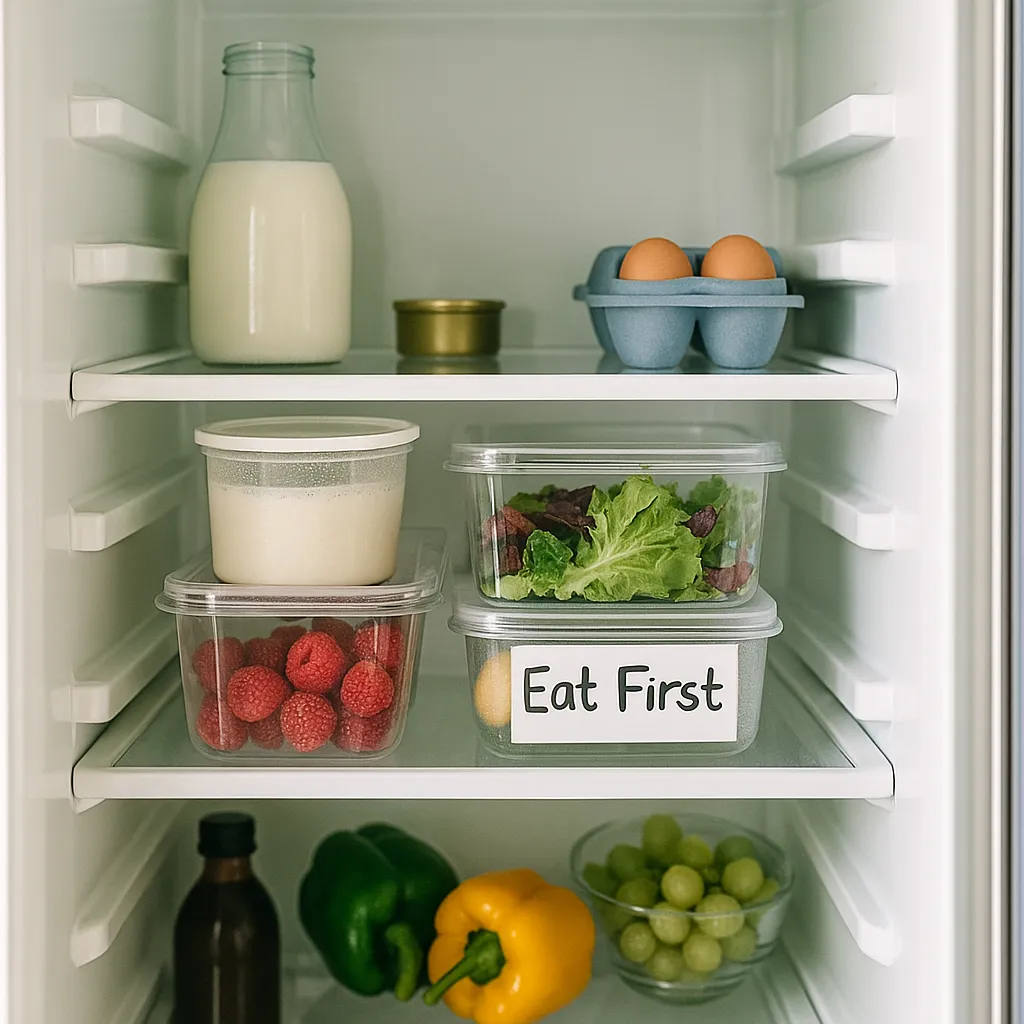
6. Leftovers Are Ingredients, Not Trash
A big mindset shift: leftovers aren’t sad—they’re opportunities.
In my house, we schedule a “leftover night” once a week. Everything comes out of the fridge, and it turns into a buffet. It’s fun, saves money, and ensures nothing gets forgotten.
Other tricks:
- Stale bread → croutons or French toast.
- Overripe bananas → banana bread or smoothie packs.
- Roasted veggies → blended into soup.

The moment you see leftovers as ingredients, you stop wasting food—and you start saving cash.
7. Use the Freezer as Your Time Insurance
Think of your freezer as time insurance—plans change, food doesn’t have to.
- Bananas, spinach, and berries freeze perfectly for smoothies.
- Herbs freeze well in olive oil cubes for quick flavor boosts.
- Cooked ground beef can be frozen in 1-cup bags—tacos in 10 minutes flat.
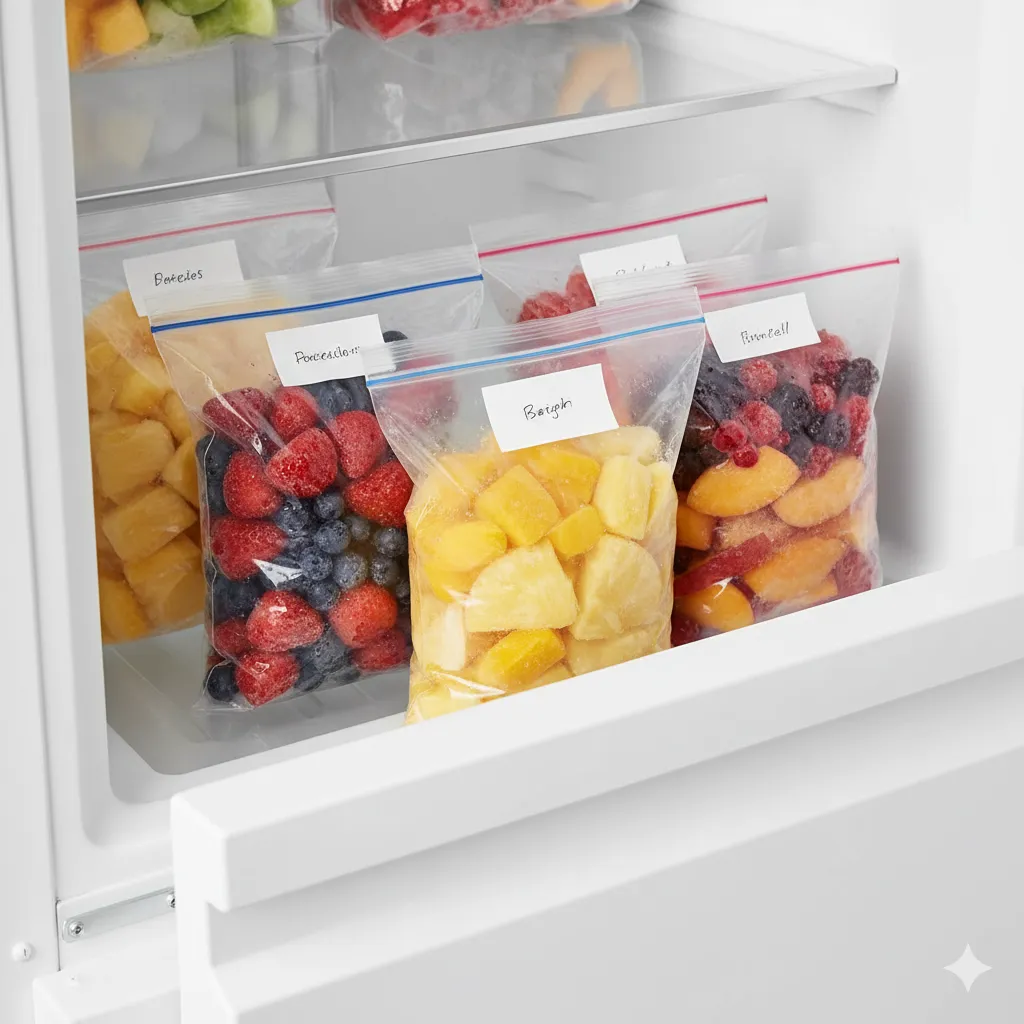
One mom I know freezes spaghetti sauce in muffin tins. She pops out one “sauce puck” whenever she needs just enough for lunch. I once copied that idea with homemade pesto, and it completely changed how I cooked pasta on busy nights.
For household fixes that stretch your dollars outside the kitchen, see The Frugal Home: DIY Fixes and Upgrades That Save You Money.
8. Track Your Progress and Celebrate Wins
If you like numbers, this part will keep you motivated.
- Compare grocery bills month to month.
- Keep a tally of how many meals you saved by using leftovers creatively.
- Write down quick wins: “turned carrots into soup,” “froze bananas before they spoiled.”
One month, I realized we had spent nearly $80 less on groceries just by using smarter meal planning tips. That was enough to cover a utility bill—without cutting back on quality food. Another reader messaged me saying she saved almost $300 in three months simply by making “leftover night” a family ritual.
FAQs About Reducing Food Waste
How long do cooked leftovers last in the fridge?
About 3–4 days. I like to call it the “72-hour rule”—if you won’t eat it within three days, pop it in the freezer before it spoils.
Is it okay to freeze vegetables raw?
Absolutely. Wash, chop, and freeze them. For firmer veggies like broccoli or carrots, blanching helps with texture. For smoothie greens, toss them into freezer bags as-is—it’s fast and fuss-free.
What are the best containers for meal prep?
I swear by clear glass containers with tight lids. My go-to is the 2-cup size—it prevents over-thawing and helps with portion control. Bonus tip: color-code lids for proteins, veggies, and grains so you can grab what you need at a glance.
Conclusion: Small Changes, Big Savings
Food waste is an invisible drain on your wallet, your time, and even your energy. But the solution doesn’t have to be complicated. By doing quick kitchen audits, using flexible meal planning tips, applying smart food storage hacks, and planning creative leftover meal ideas, you can reduce food waste and save money on groceries every single week.
Ready to put it on autopilot? Start small:
- Do one five-minute kitchen audit.
- Schedule one leftover night.
- Freeze one ingredient before it spoils.
That’s it—three tiny steps this week, and you’ll already be wasting less and saving more. Keep at it, and watch your grocery bills shrink one week at a time. Next week, try tracking your wins with a sticky note on the fridge—you’ll be surprised how quickly it adds up.
Progress beats perfection every time.


